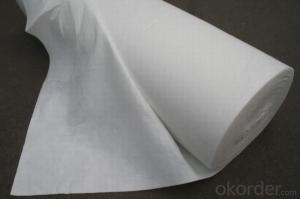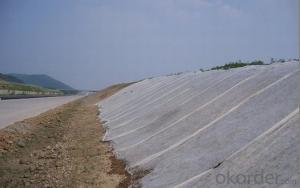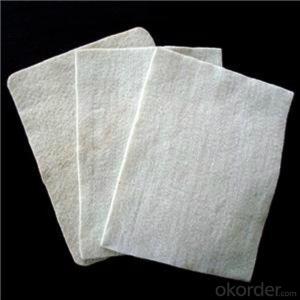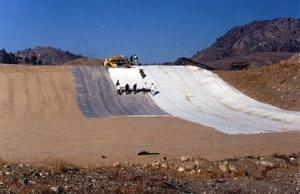Geotextile for Construction as one type of Geosynthetics
- Loading Port:
- Qingdao
- Payment Terms:
- TT or LC
- Min Order Qty:
- 20000 m²
- Supply Capability:
- 1500000 m²/month
OKorder Service Pledge
OKorder Financial Service
You Might Also Like
1.Advantage and function of Geotextile as one type of Geosynthetics
Good flexibility,permeability,filtration,separation and easy for construction
1) Filtration
The filtration layer of the dykes, river canal, seacoast, concrete slope, retaining walls. At the same time of preventing the clay granule from passing, it allows the water and the gas pass through freely.
2 )Separation:
The isolation of the railway dregs and the roadbed, roadbed and the soft base, surface of the airdrome and parking lot and the groundsill, different dam materials. It isolates the soil and the gravel of two kinds different granule pathway from the groundsill or other buildings.
3) Adding muscle:
The highway, railway, soil-stone dam, breakwater, airport, backfill soil of retaining wall, slope protection, etc in which distributes the earth stress, prevents the side-displacement of the earth body and improves the earth body stability.
4 )Protection
It prevents the dam from being washed out, protects the dam and the bottom, prevents the water and soil from being washed away.
2.Usage:
Used in the area of highway,railway,dam,reclamation etc.for filtration separation drainage and protection.
3.Size of package
Width is 1-8m,length is 50-100m,or pack as client request
2.Specifications of Geotextile as one type of Geosynthetics
1) Weight / Mass: 100g/m2-1500g/m2
2) Width: Within 8 m (1m-8m)
3) Length: 50m-100m/roll (as request)
4) Material: PP / PET
5) Color: Black , white , grey and other color
6) Certificate: CE/ISO9001 , ISO14001
7) Manufacturing method: nonwoven / woven
8) The Biggest geotextile manufacturer/factory in China for many years
3. Technical Data Sheet of Geotextile as one type of Geosynthetics
PET continuous filament spunbond needle punched nonwoven geotextile(representative average data.) | |||||||||
Test Item/Unit/No. | HY100 | HY150 | HY200 | HY250 | HY300 | Test Method | |||
Mechanical Properties | |||||||||
Tensile Strength | CD | kn/m | 4.8 | 8.3 | 10.9 | 14.5 | 18 | ASTM D 4595 | |
MD | 7 | 12 | 14 | 18 | 22 | ||||
Elongation at maximum load | CD | % | 65 | 64 | 63 | 62 | 61 | ||
MD | 64 | 63 | 62 | 61 | 60 | ||||
Grab Strength | CD | kn ≥ | 0.36 | 0.58 | 0.87 | 1.08 | 1.35 | ASTM D 4632 | |
MD | 0.42 | 0.78 | 1.07 | 1.33 | 1.6 | ||||
Grab Elongation | CD | % | 55 | 55 | 59 | 59 | 60 | ||
MD | 50 | 50 | 51 | 51 | 53 | ||||
Trapezoidal Tear | CD | kn ≥ | 0.16 | 0.23 | 0.31 | 0.39 | 0.46 | ASTM D 4533 | |
MD | 0.245 | 0.31 | 0.42 | 0.46 | 0.55 | ||||
Burst Strength-CBR plunger method | kn ≥ | 0.85 | 1.47 | 2.3 | 2.8 | 3.3 | ASTM D 6241 | ||
Puncture resistance | n ≥ | 220 | 320 | 430 | 540 | 650 | ASTM D 4833 | ||
Mullen Burst | Mpa | 1.2 | 1.8 | 2.3 | 2.8 | 3.3 | ASTM D 3786 | ||
Cone drop resistance(hole-Φ)Dynamic perforation diameter | mm | 34 | 30 | 26 | 22 | 19 | BS EN 918-1996 | ||
Hydraulic Properties | |||||||||
Flow Rate,Q100 | L/s/m² | 200 | 210 | 180 | 150 | 140 | ASTM D 4491 | ||
Permeability | cm/s | 0.48 | 0.43 | 0.39 | 0.36 | 0.34 | |||
Apparent Opening Size O95 | mm ≤ | 0.13 | 0.12 | 0.12 | 0.11 | 0.11 | ASTM D 4751 | ||
Apparent Opening Size O90 | mm ≤ | 0.12 | 0.11 | 0.11 | 0.1 | 0.1 | |||
Physical Identification Properties | |||||||||
Thickness 2KPa | mm | 1.1 | 1.3 | 1.8 | 2.5 | 2.9 | ASTM D 5199 | ||
Mass per unit area | g/m² | 100 | 150 | 200 | 250 | 300 | ASTM D 5261 | ||
Width | m | 2/3/6/ | 2/3/6/ | 2/3/6/ | 2/3/6/ | 2/3/6/ | |||
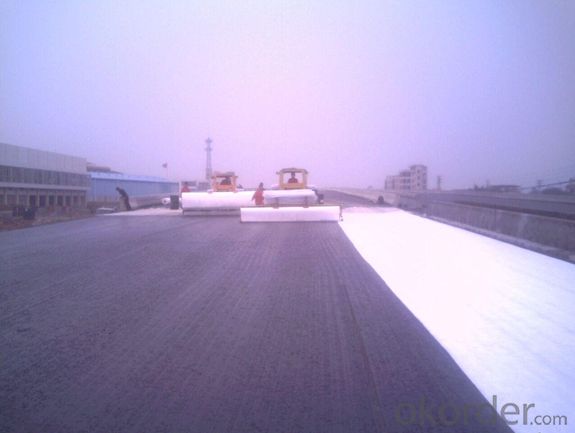
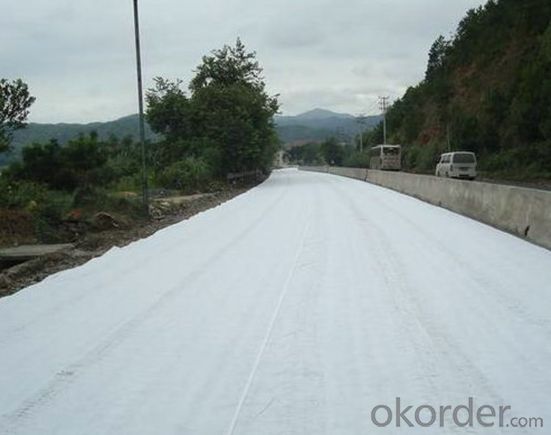
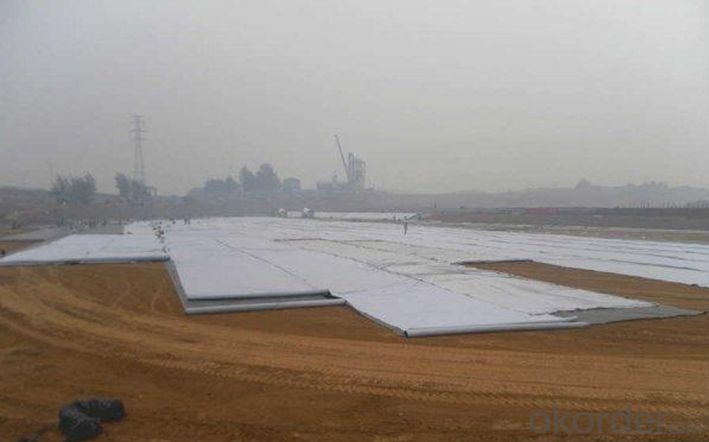
Pond Liner and Geomembrane Lining Systems - Once known as "flexible membrane liners", geomembranes encompass a broad group of products with distinctive properties and advantages in a multitude of uses as liners for pond lining, landfills, waste water ponds, floating covers, tanks, leach pads, reservoirs, lagoons, barriers, caps, secondary containment - application use is bounded only by the imagination.
What are Geomembranes and Geosynthetics? - Geosynthetics is a general classification representing all man-made materials used in geotechnical engineering applications including pond liners and lake lining. Many of its products are engineered to meet specific design requirements in fluid barrier systems or are designed to enhance the properties of existing soils (physical, hydraulic or mechanical).
Geosynthetics are a Smart Alternative - The value of these products lies in their ability to partially or completely replace [non-renewing] natural resources such as gravel, sand, bentonite clay and do so at a much lower cost. The technical advantages of geosynthetics are the engineered, testable, quality monitored properties of geosynthetic products versus the often difficult to verify quality and specs of naturally occurring materials. Different geosynthetic materials can be combined in order to perform desired functions, often yielding higher "rates" than the components taken separately.
- Q:Designers give blind ditch length of 540m, geotextile for 2835m2 more
- Lovel new materials geotextile raw materials: geotextile raw materials used not only to consider its use in the environment required physical and chemical properties, but also pay attention to product costs.
- Q:This is a large sample of gravel anti-filter how this project count
- Visual inspection of the slope of the distance from the clay layer is equal to the thickness of the gravel layer, that is 200mm, so even if it came out scattered Simple function. Also, I used a simple method is to draw in CAD, fill, measure the area, area by length, the volume came out
- Q:How do geotextiles contribute to disaster management?
- Geotextiles play a crucial role in disaster management by providing effective solutions for various disaster-related challenges. They can be used to reinforce unstable slopes, control erosion, and stabilize soil during floods, earthquakes, or landslides. Geotextiles also aid in the construction of temporary roads, shelters, and embankments, allowing for easier access to affected areas and facilitating relief operations. Their ability to filter and drain water helps in managing excess rainfall or groundwater, preventing further damage. Overall, geotextiles are versatile and reliable tools that contribute to mitigating and managing the impacts of disasters.
- Q:How do geotextiles help with soil reinforcement in pavement systems?
- Geotextiles help with soil reinforcement in pavement systems by providing a strong and stable base for the pavement. They act as a separator, preventing the mixing of different soil layers, and also as a stabilizer, distributing the load evenly across the soil. This helps to prevent the settlement and deformation of the pavement, ultimately enhancing its durability and longevity.
- Q:Can geotextiles be used for reinforcement of road embankments?
- Yes, geotextiles can be used for the reinforcement of road embankments. Geotextiles are commonly employed in road construction and maintenance to enhance the stability and durability of embankments. They provide reinforcement by distributing loads and reducing settlement, while also improving drainage and preventing erosion.
- Q:How do geotextiles help in reducing the impact of heavy rainfall on soil?
- Geotextiles help in reducing the impact of heavy rainfall on soil by acting as a barrier between the soil and the water. They provide reinforcement to the soil, preventing erosion and soil displacement caused by the force of the rainfall. Additionally, geotextiles allow water to infiltrate into the soil and drain efficiently, reducing the risk of waterlogging and improving the overall stability of the soil during heavy rainfall events.
- Q:Polyester geotextile filter layer sets what the amount
- Polyester filament geotextile Features: Polyester filament geotextile is made by polyester method by spinning acupuncture consolidation directly made, product specifications from 80-800g / m2 arbitrary choice, it is geotechnical engineering and civil engineering In the application of a geosynthetics, polyester filament into a network and consolidation method, the fiber arranged in three-dimensional structure. In addition to good mechanical properties, but also has a good vertical and horizontal drainage performance and good extension properties and high resistance to biological, acid and alkali, anti-aging and other chemical stability. At the same time, it also has a wide pore size range, tortuous pore distribution, excellent permeability and filtration performance. Polyester filament geotextile Uses: water conservancy project dam and slope protection of the filter, channel isolation, seepage; road, rail, airport runway foundation isolation, filter, drainage, slope, retaining wall and road reinforcement, Drainage; Port Engineering soft foundation treatment, beach embankment, harbor wharf and breakwater reinforcement, drainage; polyester filament geotextile has been widely used in the field of infrastructure construction, and gradually applied to a wider range of areas. Geosynthetics are the general term for synthetic materials for civil engineering applications. As a kind of civil engineering material, it is a synthetic polymer (such as plastic, chemical fiber, synthetic rubber, etc.) as raw materials, made of various types of products, placed in the soil, the surface or between the various soil , Play to strengthen or protect the role of soil. "Geosynthetics application of technical specifications" will be divided into geotextile geotextile geotextile, geomembrane, geotextile special materials and geotextile materials, geotextile, fiberglass, geotextile and other types.
- Q:What is the difference between nonwovens and geotextiles? What is the difference between geotextiles and nonwovens?
- Geotextile is divided into two non-woven geotextile and woven geotextile, non-woven geotextile and acupuncture and spunlace, staple fiber and long fiber. Nonwovens means that the manufacturing process does not require weaving. Geotextiles are used for geotechnical engineering. Geotextile is part of the textile does not require the manufacture can be made, called non-woven geotextile. Non-woven fabrics can be used very broad, like we use the heart of the soft wipes, are non-woven, as well as the hotel put the shoes of the shoes, but also non-woven.
- Q:What is the seepage geotextile
- Is the kind of ordinary geotextile
- Q:How do geotextiles contribute to green building certifications?
- Geotextiles contribute to green building certifications by providing sustainable and eco-friendly solutions for various construction applications. They can help improve stormwater management, erosion control, and soil stabilization, reducing the environmental impact of construction projects. By incorporating geotextiles in building designs, projects can meet the requirements of green building certifications that prioritize sustainable practices and materials.
1. Manufacturer Overview |
|
|---|---|
| Location | |
| Year Established | |
| Annual Output Value | |
| Main Markets | |
| Company Certifications | |
2. Manufacturer Certificates |
|
|---|---|
| a) Certification Name | |
| Range | |
| Reference | |
| Validity Period | |
3. Manufacturer Capability |
|
|---|---|
| a)Trade Capacity | |
| Nearest Port | |
| Export Percentage | |
| No.of Employees in Trade Department | |
| Language Spoken: | |
| b)Factory Information | |
| Factory Size: | |
| No. of Production Lines | |
| Contract Manufacturing | |
| Product Price Range | |
Send your message to us
Geotextile for Construction as one type of Geosynthetics
- Loading Port:
- Qingdao
- Payment Terms:
- TT or LC
- Min Order Qty:
- 20000 m²
- Supply Capability:
- 1500000 m²/month
OKorder Service Pledge
OKorder Financial Service
Similar products
New products
Hot products
Hot Searches
Related keywords
